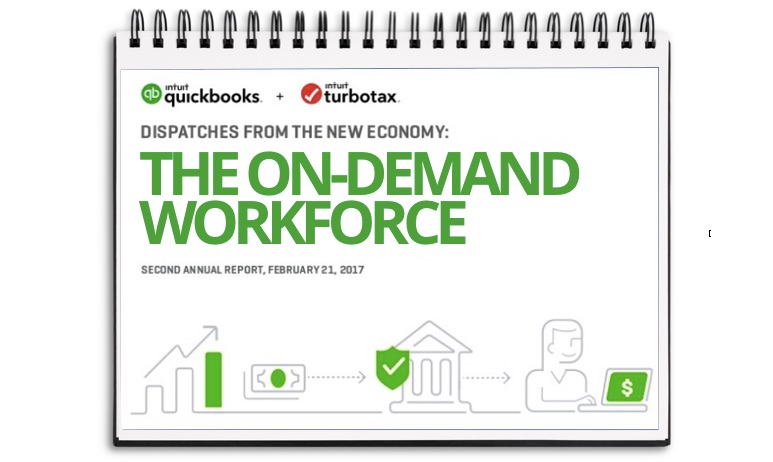Steve King, a partner at Emergent Research and a regular contributor to SmallBusiness.com, recently completed work on Inuit’s 2016 Dispatches From the New Economy: The On-Demand Workforce Study. This is the second annual study and as like last year, Emergent partnered with Intuit on the research. Here is Steve’s overview of this year’s study.
Growth of the on-demand workforce
3.2 million | 2016 | Americans working in the on-demand economy
3.9 million | 2017 | Americans working in the on-demand economy
9.2 million | 2021 | Estimated growth of Americans working in the on-demand economy
If the growth of Americans working in the on-demand economy continues its predicted growth, by 2021 it will represent a 23 percent compounded annual growth rate.
Key findings of the research*
On-demand work is used to supplement existing income
- 11 Hours | Average time per week spent by person who participates in on-demand economy
- 24% | Percentage of household income from on-demand work
- 41% | Percentage of on-demand economy participants who also have a traditional full- or part-time job
On-demand work fills near-term financial needs
- 66% | Percentage of on-demand economy participants who have variable monthly income
- 41% | Say variable monthly income is due to a financial hardship like a job loss, medical problem, or unexpected major expense during the prior year. By comparison, just 18 percent of all Americans in a recent U.S. Federal Reserve survey reported encountering a financial emergency.
On-demand work is used to build a sustainable future
Many people are using their on-demand economy work to either develop a new business or to supplement and expand an existing business.
- 37% | On-demand economy participants who already own a business
- 21% | On-demand economy participants who want to build a business
There is general satisfaction with on-demand work
- 38% | On-demand economy participants who feel they are better off
- 14% | On-demand economy participants who feel they are worse off
- 81% | On-demand economy participants who plan to continue working an on-demand job over the next 12 months
- 67% | On-demand economy participants who are satisfied with their work
*The study defined workers in the on-demand economy as those who find work via online marketplaces, apps and websites that connect buyers and sellers of talent. This year, we surveyed 6,247 such independent workers.
VIA | Small Business Labs: 2016 Dispatches From the New Economy: The On-Demand Workforce Study

